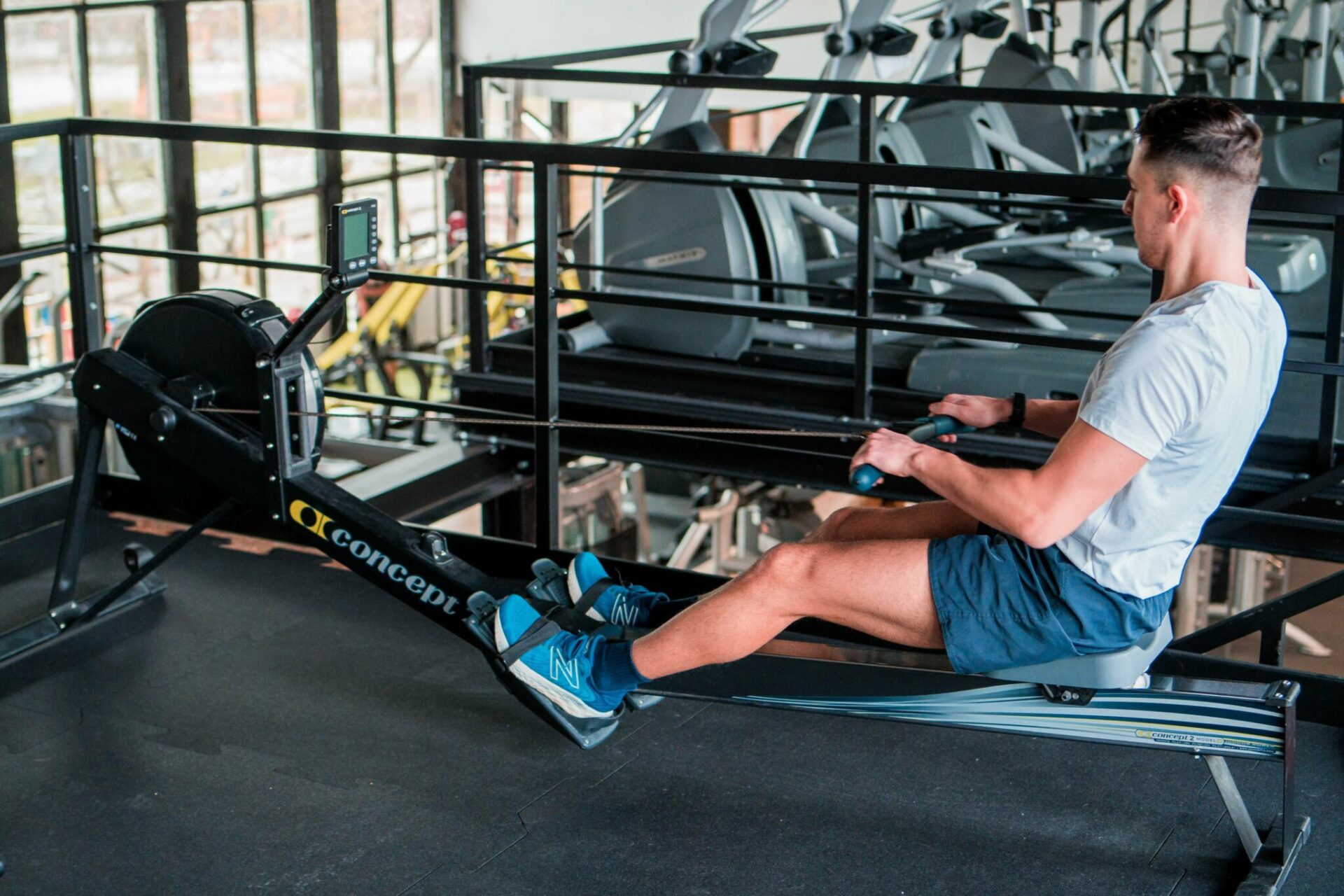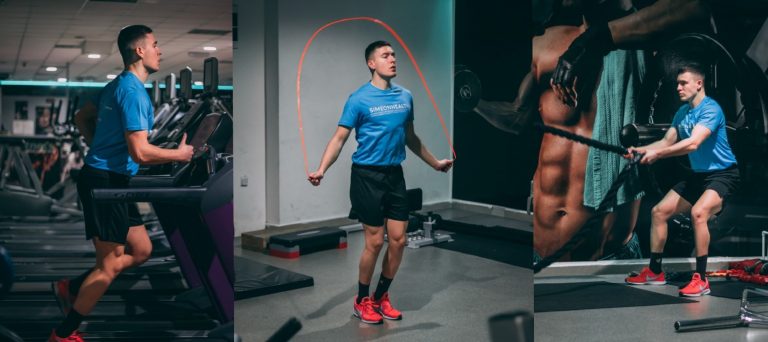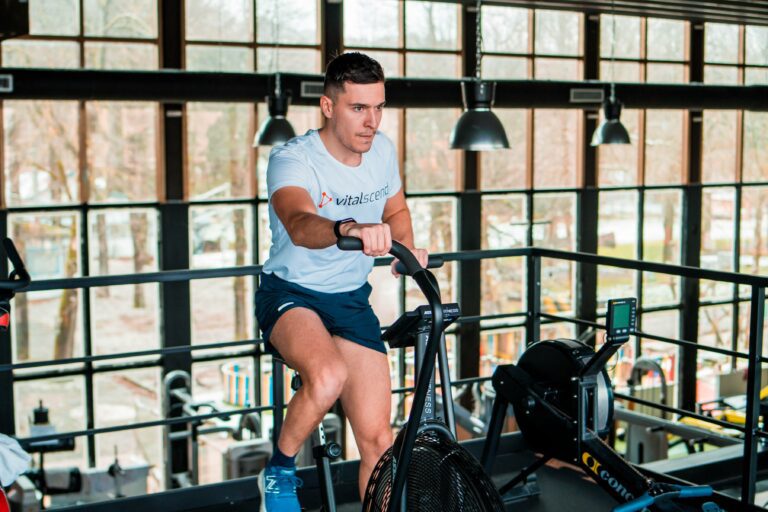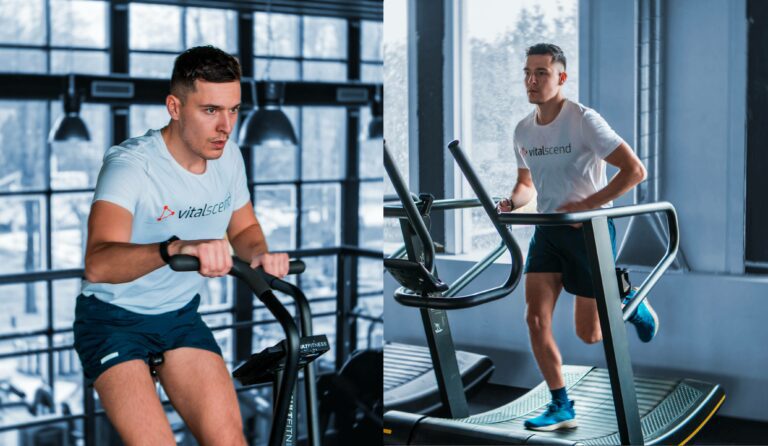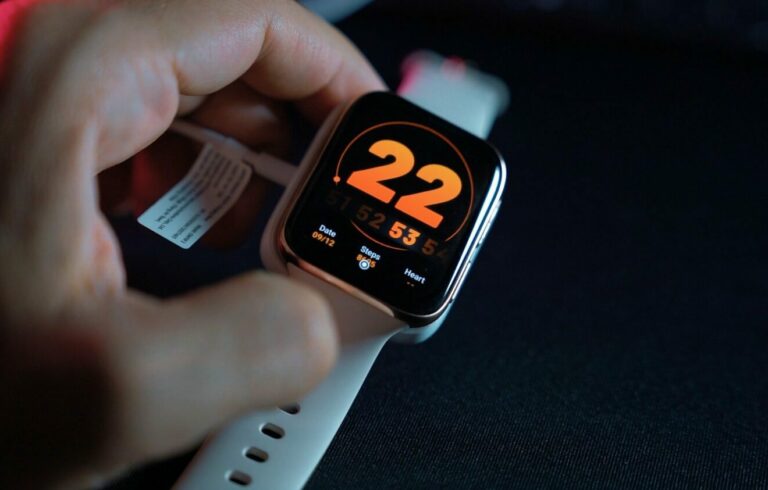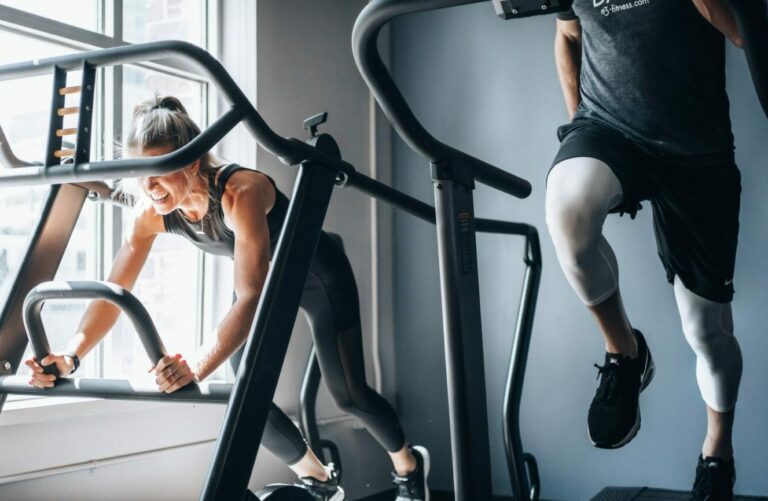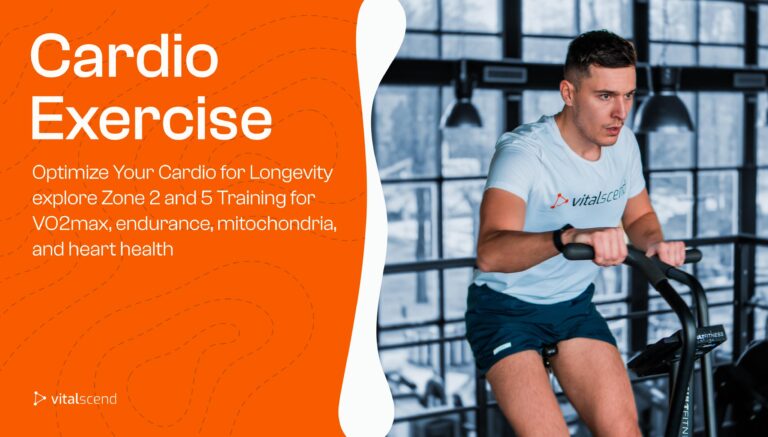The 20 Minute HIIT Workout – How to Increase VO2max
VO2 Max is a standard measure of cardiorespiratory fitness. The higher it is, the more aerobically capable we are. Increasing VO2max comes with a myriad of health benefits such has heart health, higher energy, and elite stamina.
We’ll check out the most effective 20-minute HIIT workout to increase the VO2max. You might be surprised to discover that high-interval intensity aerobic exercise is more effective in increasing VO2max values than steady-state cardio. Let’s dive in.
What is VO2max
VO2 Max is the maximal oxygen uptake or maximal aerobic capacity of the body. It is measured by ml of O2, per kg of body weight per min – ml/kg/min for short. It gives a rough estimate of how efficient our body is and taking in, transporting, and using oxygen effectively.
Fun Fact
Elite endurance athletes have numbers hovering around 70 to 90 ml/kg/min. Healthy adults have numbers around 30 or 35 for females and 40 to 45 for males. The older we get, the lower the VO2 max gets. In some elderly people, it even reaches below 20 ml/kg/min, diminishing functional capacity.
VO2max = Cardiac Output x a-vO2 difference.
VO2max depends on our cardiac output and arterio-venous difference of O2.
- Cardiac Output (Q) – the volume of blood pumped out through the left ventricle (stroke volume) x heart rate (beats per minute). As exercise intensity increases, both stroke volume and heart rate increase.
- Arterio-venous difference of O2 tells you how much oxygen your muscles took in, as blood was in circulation. The higher the number, the more your muscles are adapted to using oxygen.
Why is VO2max Important?
VO2max is one of the key markers for longevity. Higher values mean better cardiorespiratory fitness – you have more functional capacity. You can move more, which is the antidote to gaining weight, inflammation, and diseases.
There’s a high correlation between high VO2max and longer lifespan, as research suggests. (1) (2) (3)
Higher VO2max means we’re able to use more oxygen and produce more energy. This is important as most metabolic health issues like diabetes, obesity, insulin resistance stem from metabolic deficits. We are unable to create as much energy as we need, so we don’t move as much and we eat more. (4) (5) (6)
Aerobic exercise leads to higher cardiorespiratory fitness, which improves a ton of markers related to heart health. We are talking blood pressure, cholesterol levels, vascularity, circulation, et cetera. Plus, exercise helps generate new mitochondria, the power cells responsible for energy creation. (7) (8) (9)
Fun Fact
Although VO2 max values diminish with age, a trained 80-year-old can have the same VO2max as a sedentary 60-year-old. Those who frequently do aerobic training combining steady state cardio and high interval intensity can reduce the decline in VO2max with age.
How can I increase my VO2 max?
Increasing VO2max levels is best done by incorporating high-intensity training that works your heart and lungs. Most effectively, these are short sprints with an active break like 15s:15s or longer intervals like 3-5 minutes done at VO2max velocity, with active rests for recovery.
HIIT vs LISS cardio – which one is better?
There’s no one that’s superior, they’re just different. HIIT is more suitable for increasing heart and lung function (VO2max), burning more calories faster, and boosting metabolism. They do pose higher stress to the body, one needs longer recovery from HIIT. LISS on the other hand is more enjoyable, with higher adherence. It’s the low-paced running, swimming, or hiking that’s great for weight loss. It also optimizes mitochondria function, boosts energy, and is healthy for the heart.
Are cardio workouts good for your heart?
Yes, it’s why they’re called cardio. It’s derived from the word kardia, which means heart in Greek. Cardio promotes heart and lung function, stimulates circulation, and strengthens the heart. It’s the ultimate tool for increasing one’s cardiorespiratory fitness.
How to Measure VO2max?
VO2 max values are measured in a laboratory test using a cycle ergometer or a treadmill. You basically cycle or run at a given intensity, which increases in increments with time. During such activity, you have a mask on, which analyzes expired air – specifically the ratio of O2 to CO2.
As intensity increases, you reach a point where you can’t use oxygen more efficiently, so VO2max stops increasing. You can still run at a higher intensity using anaerobic fuel, but it’s not aerobic anymore. That’s your VO2max level.
Why is this important? Well, to optimize your training specifically for VO2max, you need to understand at what velocity you reach it. It’s of great importance to train specifically at that velocity, which can be sustained for around 5 to 8 minutes.
If you don’t have an access to a laboratory where you can perform a VO2max test, other ways to give you a rough estimate of VO2max (velocity) are:
- Smartwatch (band) or a Health Tracker – using different formulas like resting heart rate or heart rate variability, gender, weight, height, etc.
- Formula – VO2max = 15 x (HRmax/HRrest) – you can easily calculate these two, HRrest in the morning with a heart rate monitor, HRmax is roughly 220-age.
- Fitness Test – the velocity at your VO2max can be the one you can sustain for 5-8 minutes (for most people) – a rough estimate.
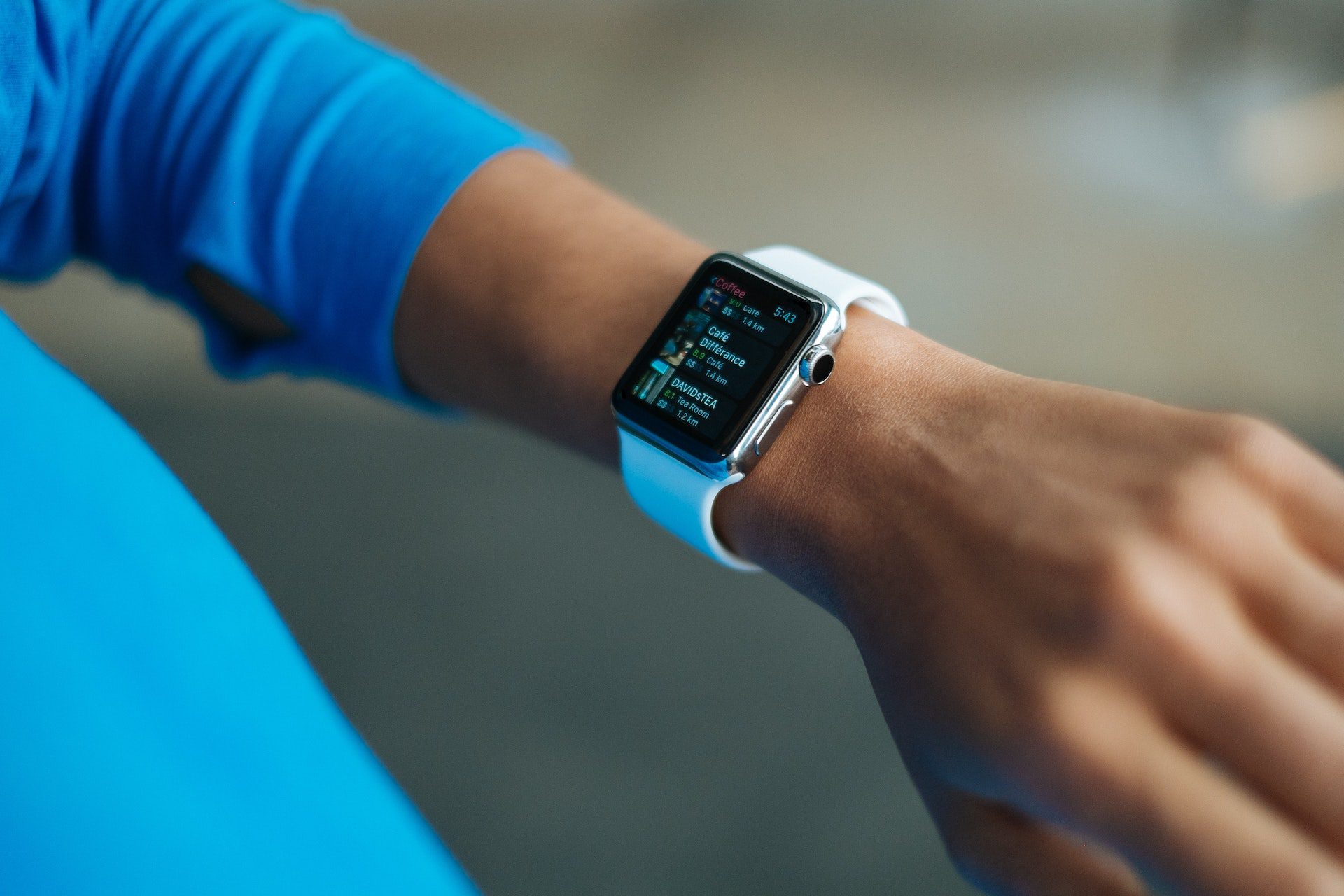
Training Zones – Aerobic, LT, Anaerobic
In the realm of exercise physiology, the zones of training are the holy grail for proper training periodization. We must know at which zone the train to improve a certain ability.
For example, lower intensities burn fat and are great at recovery. Zone 4 intensities are great at improving local muscle endurance and lactate threshold. Zone 5 training is greatest at improving VO2 max and aerobic capacity.
Each zone represents a training intensity determined by the % of HRmax (maximal heart rate) or VO2max %. We can split intensity into three or five zones. For more accuracy, let’s look at the five-zone model.
| Zone 1 | Great for Recovery | 50-60% HRmax |
| Zone 2 | Trains Endurance, Burns Fat | 60-75% HRmax |
| Zone 3 | Improves Aerobic Fitness | 70-85% HRmax |
| Zone 4 | Trains Lactate Threshold | 80-95% HRmax |
| Zone 5 | Increases VO2max & Anaerobic Function | 90-100% HRmax |
The first two zones are aerobic, burning fat for fuel, and using oxygen. They’re light and easy to do -can be sustained for long periods of time. As we progress, there’s the third zone which transitions to using faster fuel like glycogen.
As intensity increases lactate starts accumulating. That’s the LT2 or lactate threshold point – the zone 4 training for local endurance. At even higher intensity we get to zone 5. The first half of zone 5, at around 100% VO2max is great for aerobic power, exactly the intensity we’re looking for for this workout. Going faster – like 140% VO2max purely trains the anaerobic system using fast glycogen, creatine, and ATP (think sprinting).

The Most Effective Way to Increase VO2max
Besides the importance of getting your 10,000 steps a day and doing some steady-state cardio, which covers the basics – let’s look at three common types of training used to boost VO2max.
- Longer intervals. Running for 3 minutes at the velocity of your VO2max at (speed 8/10) with 3 minutes of active recovery at 50% that speed. 5 sets in total, 3 min. activity and 3 min. recovery.
- Short intervals. Cycling for 30 sec. intervals at a submaximal intensity (speed 9/10) with 30 sec. active recovery at 40-50% that speed. Repeat 10-20x cycles of 30s. on with 30s. recovery.
- Short sprints. After a proper 5-minute warm-up you perform 10 cycles of 10-second all-out sprint (speed 10/10) with a 3-minutes active recovery in zone 2 (light cardio, slow speed)
Fun Fact
When training to increase VO2max – recovery is of great importance, you cannot sustain such high intensity without sufficient recovery. That’s the point of it. VO2max training emphasizes 1:1 ratio of activity to rest, different from the 4:1 or 3:1 model you’d find for local muscle endurance or lactate training.
The 20 Minute HIIT Workout
Our 20 Minute Workout today uses the Longer Intervals Method. Before starting, you should get a sense of your rough VO2max estimates and the speed at which you achieve VO2max.
Whether by using a formula, smartwatch, or a lab test – we need to find that intensity. Roughly, it’s a speed you can sustain for 5-8 minutes, no more – that’s around 8/10 speed, so submaximal.
Training: whether you choose to run, cycle, or row, it’s your choice. If you have a heart rate tracker, keep a tempo of 90%+ HRmax during your active run time.
- Warm-up: start warming up by doing your activity (running, cycling) at a slower, light tempo at 30-50% of max. speed. for 2 minutes.
- Main Part: 4 sets of 2 min. intense running at VO2max velocity (speed 8/10, hard tempo, 90%+ HRmax) with 2 minutes of active recovery at 40-50% that speed. The activity-to-rest ratio is 1:1.
- Cool-Down: Finish with 2 minutes at 30-50% of max. speed, the same intensity as during the warm-up phase.
Science shows that longer intervals, like 5×3 minutes at VO2max velocity with 3 min active recovery lead to a 3% increase in VO2max and a 6% boost in running economy. (10) That’s a similar training model to the one we just discovered.
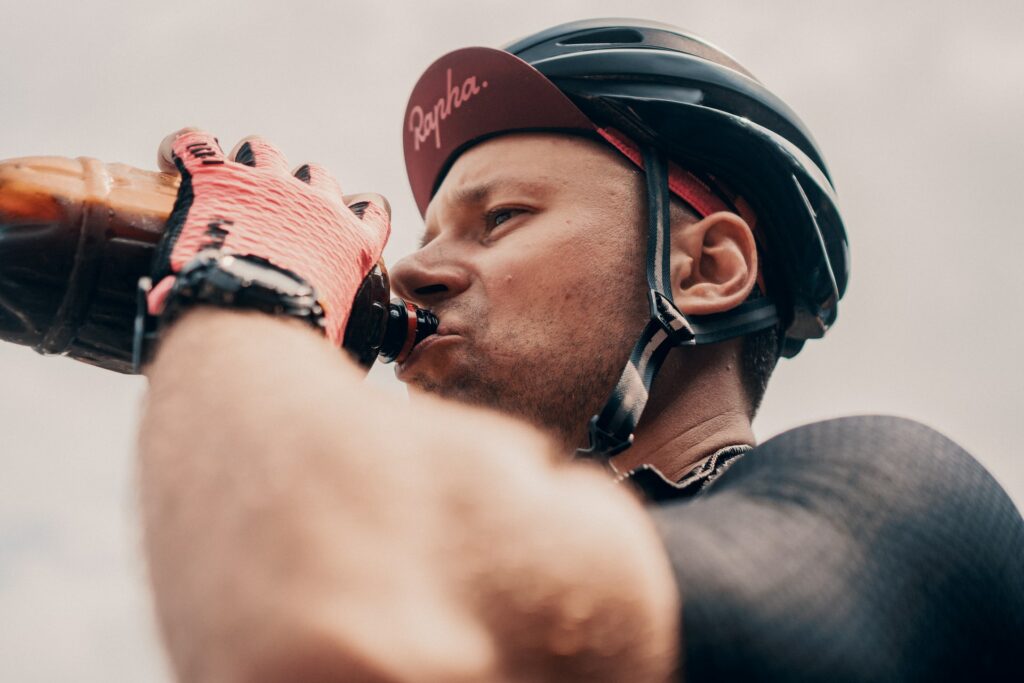
LISS – Fundamentals of Endurance
VO2max values can be tweaked faster. Matter of fact, you only need 12-weeks of endurance training to boost it to a “great” or a “pro” level. However, that’s mimicking great overall endurance, but it’s a poor indicator.
The reason is, endurance depends on so many factors. One of these is VO2max – aerobic capacity we can improve with HIIT training. But others like local muscle endurance, hemoglobin efficiency, heart enlargement, and mitochondria function are of great importance as well. Not just for stamina, but overall health.
This is where we highlight the importance of doing enough steady-state cardio. It’s the fundamental step to stamina. It builds the foundation of endurance and causes adaptations that favor a healthier heart.
This is the Zone-2 training, which is lighter intensity compared to the Zone-5 or HIIT-like training. It helps you burn fat, recover better, improves mitochondrial function, and increases oxygen transport efficiency.
pro tip
2 HIIT sessions can’t undo all the sitting we do, despite all the “facts” bike companies try to highlight. Sure, it’s better to hit HIIT 2x weekly than just sit, especially for VO2max. But if I had to pick one, getting your 10,000 steps dialed in and doing steady-state cardio 2x weekly is my primary choice.
The Importance of Recovery
The recovery period is crucial when training for VO2max. It makes all the difference between lactate training – which is quite heavy and taxing on the body. Taking some time off to actively recover helps flush out toxins, re-generate fuels, and enables you to keep that intensity up.
Lactate threshold training tries to push us to the edge of acidosis so we can improve muscle efficiency, thus making ’em faster at breaking down lactate. LT training is 3:1 or 4:1 ratio of work to rest. VO2max training isn’t about that. It’s about fully recovering to run at VO2max again, done by 1:1 ratio of activity to recovery.
pro tip
Extending the rest beyond 1:1 ratio or having a passive recovery will be less effective. The reason for this is that you need some time to reach VO2max levels, so that increase from rest to work will be steadier if you passively rest (or rest more). This means we spend less time at VO2max.
Conclusion
- VO2max is a key marker of health, heavily correlated with longevity. It’s the optimal measure of our cardiorespiratory function – giving a rough value of our efficiency in taking, transporting, and using oxygen during exercise.
- Higher VO2max values correlate with greater heart health, metabolic health, and higher energy production. It allows us to be active and keep on moving.
- The best way to increase VO2max is a high-interval intensity exercise with a ratio of work to recovery of 1:1. Three common methods are longer intervals, shorter intervals, or short sprints.
- Our 20 minutes HIIT workout consists of 2 min warm-up (50% speed), 4 cycles of 2 min at VO2max velocity (8/10 speed, 90%+ HRmax) followed by 2 min active recovery at 40-50% that speed, with a 2-min cool-down period at 50% speed.
- Steady-state or LISS cardio is still the fundamental piece of endurance, working on our mitochondria, oxygen-transporting efficiency, and heart function. Before you look into ways to optimize your VO2max, make sure you get your 10,000 steps dialed in.

